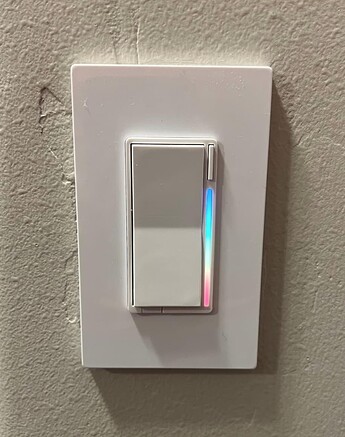Thanks! Yeah, we’re pretty pumped at how they’re turning out ![]()
The beta team has made these better and better as well, which is amazing.
In regards to HomeKit, yes, unfortunately you’ll need some sort of ZigBee hub/gateway to get these to work. I haven’t dug too deep into how it will work, but from my understanding ZigBee is needed. The other limitation is what is exposed in HomeKit. I’m not sure (only bc I haven’t tested) if all the advanced features will work in HomeKit.
Regarding Thread and upgradeability, if you’re wanting Thread, as much as I hate to admit it, I think you should wait until we put the MG24 chip in the switch. I mentioned it in more detail above (I’m sure it’s buried by now) but essentially, the chip we have in the 1st iteration is the MG21 and, while it can be upgraded, it will require a burner wire that plugs into the serial port on the switch as it does not support OTA updates (cross-protocol – ie: it will allow OTA ZigBee to ZigBee, but if you go ZigBee to Thread or ZigBee to Matter, it will require the hardwire update). Whereas the MG24 will allow OTA cross-protocol.
We are going back and forth and ultimately I’m waiting for some things to settle internally from an organizational standpoint (should have everything figured out mid-March) but I’m pushing for a separate line that specifically markets to HomeKit (Thread 2-1 Switch (On/Off & Dimmer) | Project Jonagold (White Series) - Projects & Roadmaps - Inovelli Community) that I’d like to get off the ground. It seems like a no-brainer to just create the firmware and make a limited batch to test the waters.
TLDR: The Blue Series initial launch will require a ZigBee bridge to work with HomeKit and the first iteration will require a physical cable to update to Thread (whereas V2 will allow OTA updates). I’m pushing for a separate series that targets HomeKit, but I need the resources to do so – however, in the coming weeks, there should be a big announcement that should free me up to focus more on innovation, which may include HomeKit (knock on wood).
@jrperry – makes complete sense. We had also considered putting some sort of, “brail” on the 5-Button so that you could easily figure out which button is which. I like the aesthetics of the flat button vs the convex design, but I can understand the sleep deprived parent scenario (I have 4 girls lol).
Yes ![]()
This is the plan, and works now with the groovy device handlers, but I’m not entirely sure what is supported with the Edge drivers. Possibly @EricM_Inovelli can answer this one!

Yes, we just got v8 of the firmware which has individual notifications built in, so we’ll see how it performs, but this is the goal!
The issue we’re running into that may not be solved is that the way the diffuser works (see terrible illustration below lol):
Basically, how the switch is designed is to create a smoothing affect that makes the LED bar look like it does in the photo above (and how it has for the past couple years). In order to have 7 individual LED’s lit up, we need to come up with a different design.
The good news is that the diffuser pops out really easy so we could, in essence just sell (or put in the package depending on how much extra cost there is) a separate diffuser. My fear is that it will not be ready in a month though as it does take a bit of tooling money/time, etc – so this may be something that’s built into the firmware initially and then the hardware will follow.
Hope that makes sense?




